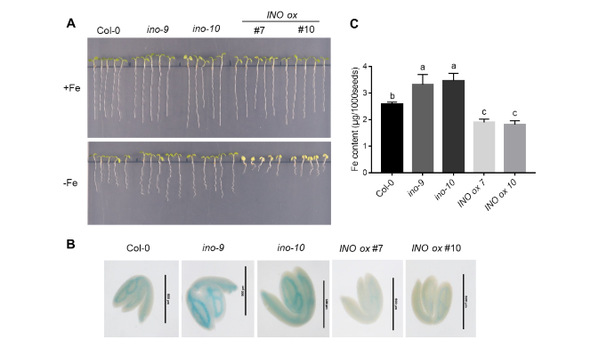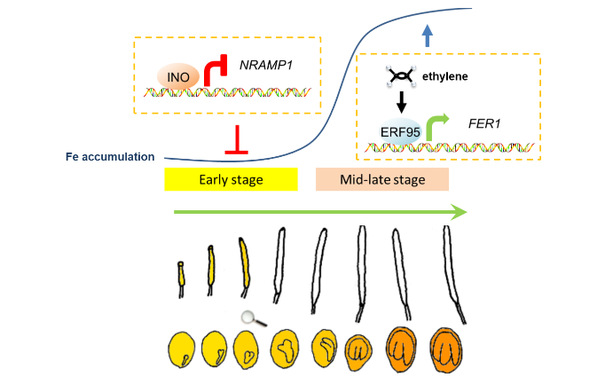Mechanism and biological significance of regulating iron loading during early seed development
Iron (Fe) storage in plant seeds is not only necessary for seedling establishment following germination, but also a major source of dietary Fe for human and animal life. Mother plants transport iron into seeds for storage during the fruit-bearing process. However, an excessive amount of iron is toxic to cells. It has been reported that iron loading is restricted at the initial stage of seed development. Nevertheless, how plants regulate early seed iron loading and the biological function of this process remain elusive.
The research team led by Prof. ZHENG Shao-Jian from the Zhejiang University College of Life Sciences engaged in research into the underlying mechanism and biological significance of seed Fe accumulation. Their research findings are published in a research article entitled “Restriction of Iron Loading into Developing Seeds by A YABBY Transcription Factor Safeguards Successful Reproduction in Arabidopsis” in the journal Molecular Plant online on June7, 2021 (doi: 10.1016/j.molp.2021.06.005).

In their study, researchers observed that the expression of NATURAL RESISTANCE ASSOCIATED MACROPHAGE PROTEIN 1 (NRAMP1), which encodes an Fe transporter, was significantly enhanced in INNER NO OUTER (INO) knockdown mutants. In contrast, transgenic overexpression of INO has an opposite effect. Further research revealed that INO was highly expressed during early seed development. The relatively high embryonic Fe accumulation conferred by decreased expression of INO was rescued by the nramp1 loss-of-function mutation. This study also demonstrated that INO repressed NRAMP1 expression by binding to the NRAMP1 specific promoter region. Moreover, excessive Fe loading into developing seeds in ino mutants produced more oxidative damage, leading to increased cell death and seed abortion, a phenotype that can be rescued by nramp1 mutation. Taken together, these results indicated that INO plays an important role in safeguarding reproduction by reducing Fe loading into developing seeds via repression of NRAMP1 expression.

This research may also provide a molecular basis for improvement of the seed Fe content of crops, e.g., by tissue specific manipulation of INO expression to a level that confers increased seed Fe loading but has no harmful effect on embryogenesis or seed set. “The promotion of seed anti-oxidative capacity should also be considered in future crop breeding strategies aimed at increasing seed Fe accumulation,” said Zheng.